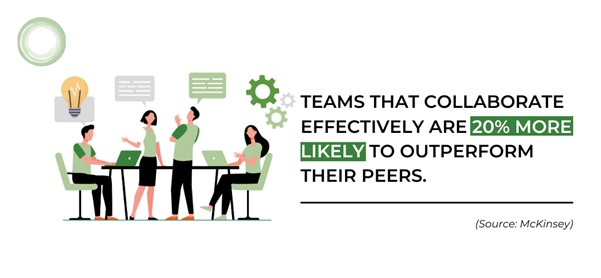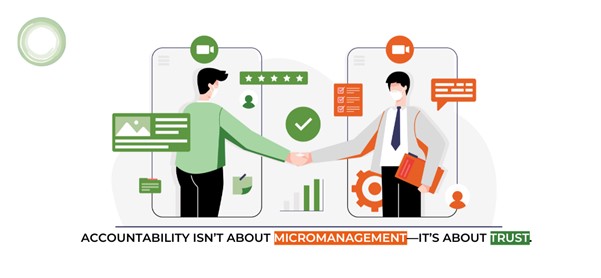How to Build High-Performing Teams: Empathy, Collaboration, and Accountability in Action
Building a high-performing team isn’t just about assembling talented individuals—it’s about creating an environment where they can thrive together.
In industries like private equity, healthcare, and technology, leaders face unique challenges: diverse teams, competing priorities, and the constant pressure to deliver results.
The foundation of great leadership lies in empathy, collaboration, and accountability. These principles transform ordinary teams into high-performing ones. But how do you effectively embed them in your leadership approach while balancing daily demands?
This article explores practical strategies for cultivating these values, supported by research and real-world examples, so you can lead your teams to sustained success.
Empathy in High-Performing Teams: How Leaders Build Trust and Connection
Empathy isn’t just a nice-to-have—it’s a critical leadership skill. A Catalyst study found that 75% of employees with highly empathetic managers report being committed to their jobs, compared to just 33% of those with less empathetic managers. (de Oliveira, 2023)

Why Empathy Matters in Leadership
Empathy enhances emotional intelligence (EI), helping leaders navigate complex dynamics and build stronger connections with their teams.
For example, a healthcare leader who actively listens to frontline staff can uncover valuable insights that improve patient care. By creating a culture of trust, empathetic leaders also reduce burnout and turnover—an essential outcome in industries where talent retention is critical.
How Leaders Can Foster Empathy
Empathy is built through consistent actions that demonstrate care and understanding.
Top Strategies for Leaders:
- Practice Active Listening: Give your full attention in conversations. Reflect back what you hear to show understanding.
- Model Vulnerability: Share personal challenges and encourage openness, fostering emotional safety in your team.
- Solicit Feedback: Use surveys or one-on-one meetings to understand team needs and identify areas for your own improvement.
Empathy transforms how teams work together, creating the trust needed for high performance.
Enhancing Collaboration: Strategies to Drive Innovation
Collaboration isn’t just about getting along—it’s about leveraging diverse perspectives to find better solutions. Research by McKinsey shows that organizations promoting collaboration are 20% more likely to outperform their peers.

In private equity, cross-functional collaboration during due diligence reduces risks and uncovers opportunities. In professional services, involving team members from different departments fosters creativity, leading to high-value client outcomes.
How Leaders Can Boost Collaboration
Effective collaboration doesn’t happen by accident; it requires intentional effort from leaders.
Top Collaboration Strategies:
- Mentorship: Pair more experienced employees with less experienced employees so that the mentee can learn through observation, questions, and feedback.
- Encourage Cross-Functional Projects: Rotate team members across departments to build mutual understanding and spark innovation.
- Guide Brainstorming Sessions: Use structured techniques like design sprints to ensure every voice is heard and ideas flow freely.
By creating a culture of collaboration, leaders unlock their teams’ potential to innovate and succeed.
Creating Accountability: Turning Intentions into Results
Why Accountability Drives Team Success
Accountability ensures that everyone on the team owns their role in achieving shared goals.
However, accountability isn’t about micromanagement— When accountability is rooted in trust, team members take ownership of their work because they feel supported, not scrutinized.

Let’s explore some ways to build trust without micromanaging:
- Clarify Expectations. Clearly define roles, responsibilities, and what success looks like. This reduces ambiguity and builds confidence.
- Check In Without Overstepping. Use regular one-on-ones to listen and provide support. Show that you value their input and respect their autonomy.
- Follow Through. Demonstrate accountability by meeting your commitments, acknowledging mistakes, and proactively addressing gaps in your performance.
How Leaders Can Foster Accountability
Accountability starts with clarity and is reinforced by recognition and support.
Top Accountability Practices:
- Connect Accountability to Organizational Goals: When teams understand how their contributions align with company goals, it gives teams a greater sense of purpose and drives commitment to results.
- Delegate with Clear Ownership: Assign responsibilities with precision and authority, empowering your team at every level.
- Recognize Ownership: Publicly celebrate team members who take initiative and deliver results.
These practices build trust, ensure alignment, and drive performance.
Curious how your team stacks up? Take our Engaged Team Health Quiz to see where you’re strong—and where to grow.
Measuring and Improving Team Performance
Key Metrics for High-Performing Teams
High-performing teams succeed because their progress is measurable. Leaders should track:
- Employee Engagement: Tools like Gallup’s Q12 survey provide insights into team connection and morale.
- Collaboration Metrics: Assess cross-functional interactions to identify opportunities for improvement. Platforms like Mural, Smartsheet, and Cascade Strategy can assist in that effort.
- Output Metrics: Tailor KPIs to your industry, such as project delivery timelines in technology or patient satisfaction in healthcare.
How Leaders Can Drive Continuous Improvement
Sustained success requires iterative growth. Teams that adapt based on feedback evolve into high performers.
Strategies for Continuous Improvement:
- Conduct Team Reviews: Regularly assess progress and recalibrate goals to ensure that the team (as a whole) collaborates effectively.
- Leverage 360-Degree Feedback: Collect input from peers, supervisors, and team members to identify growth opportunities for your individual team members from multiple vantage points. When conducting these assessments, we use the Leadership Circle 360 Profile, which compares scores with over 500,000 leaders in its database to give you accurate benchmarks.
- Adopt Project Closing Reviews: After major projects, hold debriefs to analyze successes and pinpoint areas for improvement. It seems obvious but this step is often overlooked in the name of moving on to the next project but efficiency is then stifled.
These steps create a culture of learning and innovation.
Your Leadership Journey Starts Here
Empathy, collaboration, and accountability are not just concepts—they are the building blocks of high-performing teams.
Leaders who master these principles will see their teams exceed expectations, delivering consistent results.
Leadership is an ever-evolving journey, not a destination. As you reflect on your current approach, consider this: Which of these principles—empathy, collaboration, or accountability—could you work on to have the biggest impact on your team today?
Start there, and watch your team’s potential unfold.
Ready to lead with greater impact?
If you’re serious about building stronger teams through empathy, collaboration, and accountability, the next step is clear. Explore the Leadership E.D.G.E. program and start turning insight into action.


